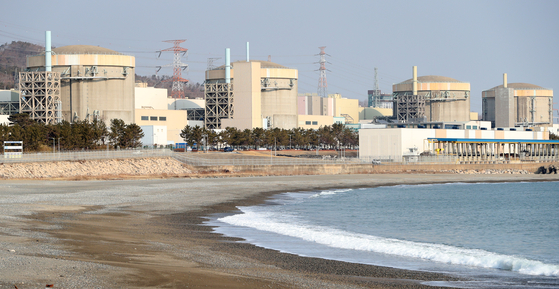
The Wolseong Nuclear Power Plant is surrounded by controversy over the detection of tritium. yunhap news
The spreading’nuclear power plant (nuclear power plant) ghost story’ has been opened by Korean scientists and medical scientists. He expressed his position on the recent controversy over the controversy over the high concentration of tritium at nuclear power plants.
On the 18th, the Korean Atomic Energy Society and the Korean Society for Radiation Protection held a joint conference on the subject of’Wolseong Nuclear Power Plant Tritium, Is It Really Dangerous?’ The suspicion that tritium, one of the radioactive materials, was leaked from the Wolseong Nuclear Power Plant in Gyeongju, Gyeongsangbuk-do in excess of the standard has increased. Regarding this, a member of the ruling party gave a press conference saying, “We are asking for an investigation of the facts,” and the opposition lawmakers refuted that “the investigation of the nuclear power plant is under water.
First, the radiation exposure of residents living near the Wolseong nuclear power plant is controversial. Academia recently tested the urine of residents near the Wolseong nuclear power plant twice to investigate their exposure. The amount of exposure was 0.6 microsieverts (μ㏜) in the first analysis (2014-2015, 495 people), and 0.34 μ㏜ in the second investigation (2018-2020, 931 people).
With this, Jeong Yong-hoon, a professor at the Department of Nuclear and Quantum Engineering at KAIST, explained that it is “a small level that corresponds to 0.00034~0.0006 of the annual radiation dose limit (1mCv=1000μ㏜).” Dose limit is a term that refers to the limit amount of radiation that is thought to be harmless to the human body.
Science and medical science, Wolseong nuclear power plant ghost story fact check

Wolseong Nuclear Power Plant in Yangnam-myeon, Gyeongju-si, Gyeongbuk. yunhap news
They also verified the claim that radioactive materials were detected above the standard value at Wolseong Nuclear Power Plant. On the 11th, Nak-yeon Lee, the head of the Democratic Party, said, “In the groundwater (near Wolseong nuclear power plant), 17 times (713,000 ㏃ per liter) of tritium was detected in the groundwater (less than 40,000 becquerels).” It was inevitable.” The unit for measuring the ability of a radioactive material to emit radioactivity, ㏃, represents the amount that a radioactive material decays per second.
Professor Jeong Yong-hoon said, “It is true that 713,000㏃ was measured in the normal path of discharging water from the inside of the nuclear power plant.” However, it is natural that the concentration of tritium is high inside the nuclear power plant, and the concentration exceeds the standard value at the last drain. If you don’t, it can be considered safe.” Korea Hydro & Nuclear Power diluted 13㏃ per liter of water and discharged it in the final discharge stage.

KAIST Professor Yong-Hoon Jung visited the PR Center of Wolseong Nuclear Power Headquarters in Gyeongju, Gyeongsangbuk-do. yunhap news
Hee-ryeong Kim, a professor of nuclear engineering at the Ulsan Institute of Science and Technology (UNIST), also disclosed the results of the investigation of the amount of tritium detected outside the nuclear power plant. According to Professor Kim, the maximum amount of groundwater detected at two points around the nuclear power plant over the past five years was 0.71㏃ per liter, the water taken off the coast of the nuclear power plant over the past five years was 66.9㏃, and the rainwater that fell at the nuclear power plant over the past five years was 200.0㏃ Tritium was detected.
Professor Kim said, “Compared to the emission control standards (40,000㏃) and drinking water standards (10,000㏃) prescribed by the World Health Organization (WHO), the amount of tritium radiation in groundwater, seawater, and rainwater is extremely low. Level.”
“Thermal power plant emits five times more radiation than nuclear power plants”

In addition, when a member of the Democratic Party visited the Wolseong nuclear power plant on the 18th, residents of Yangnam-myeon of Gyeongju are blocking access. yunhap news
Professor Kang Kun-wook of Seoul National University’s Department of Nuclear Medicine said, “Each kilogram of beef and fish we normally consume contains 100㏃ of natural radioactivity (potassium 40). The suspicion that tritium is okay and that tritium is dangerous is a misleading claim with a certain purpose.”
Professor Kang continued, “The thermal power plant emits five times more radiation than the nuclear power plant,” he said. “It means that if power is produced by a thermal power plant instead of reducing the operation of the nuclear power plant to avoid tritium, the radiation exposure will increase five times.” .
Reporter Moon Hee-cheol [email protected]
